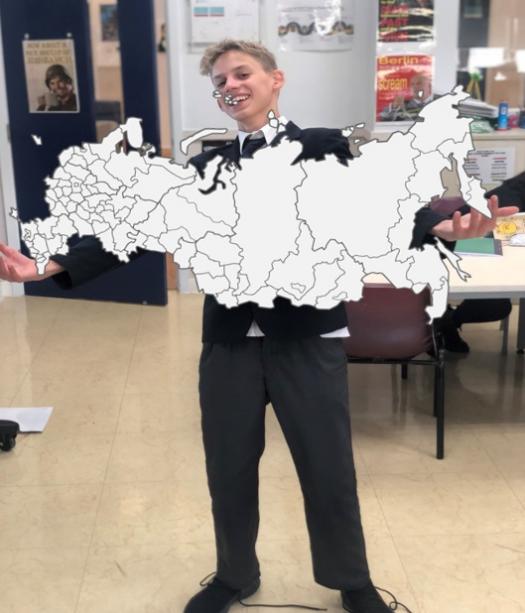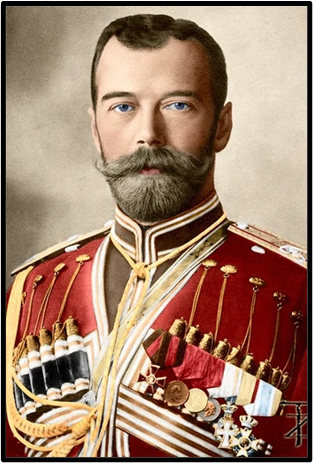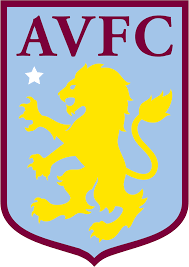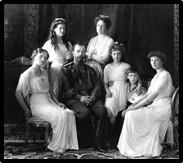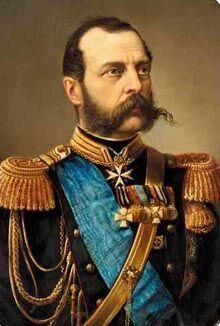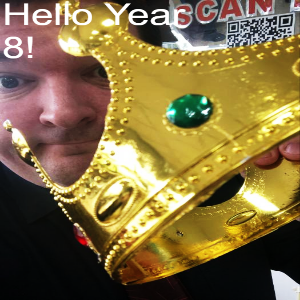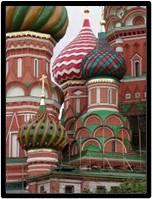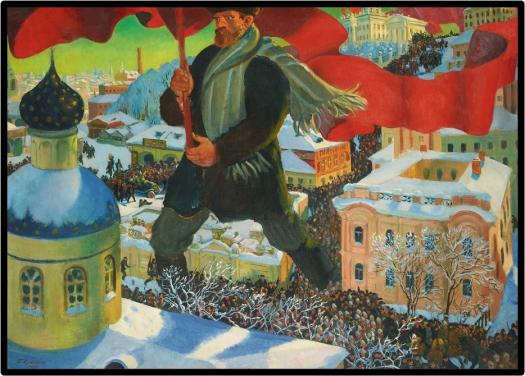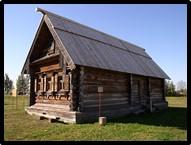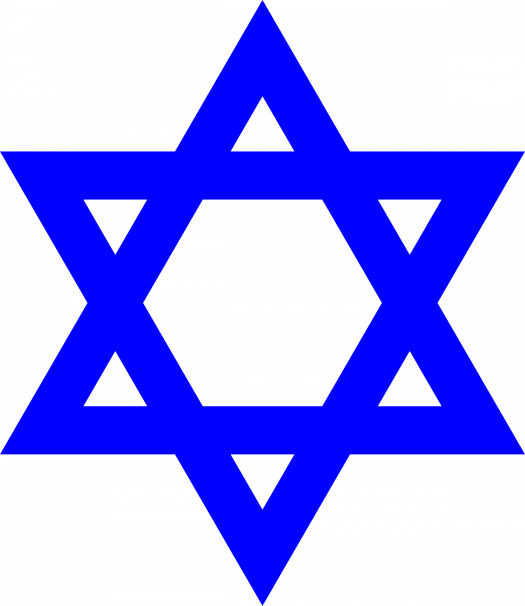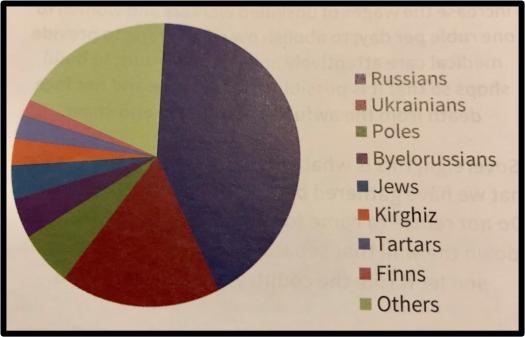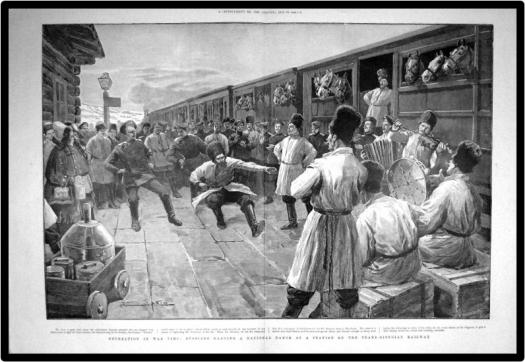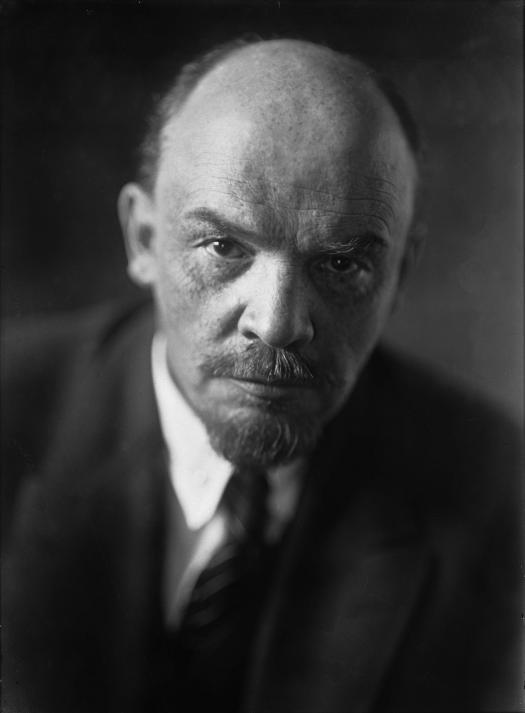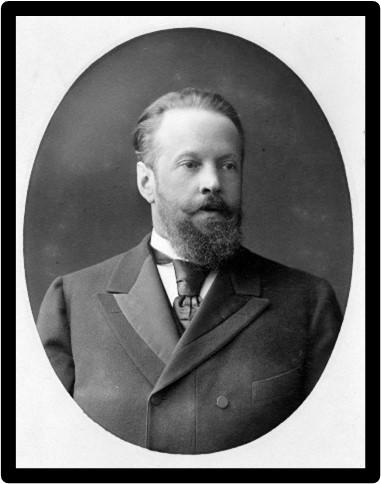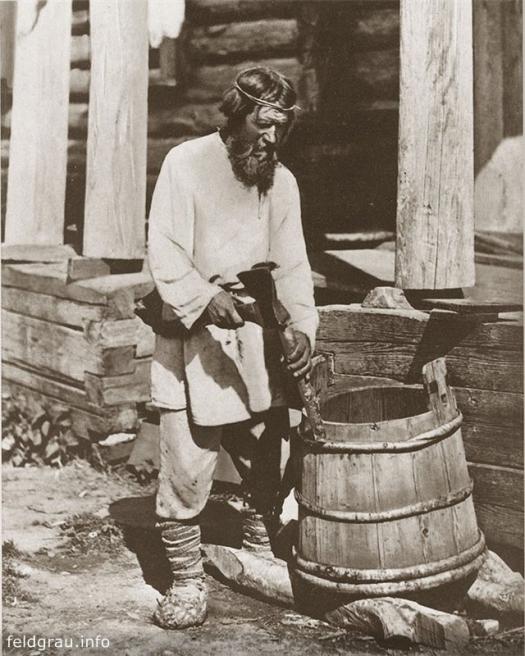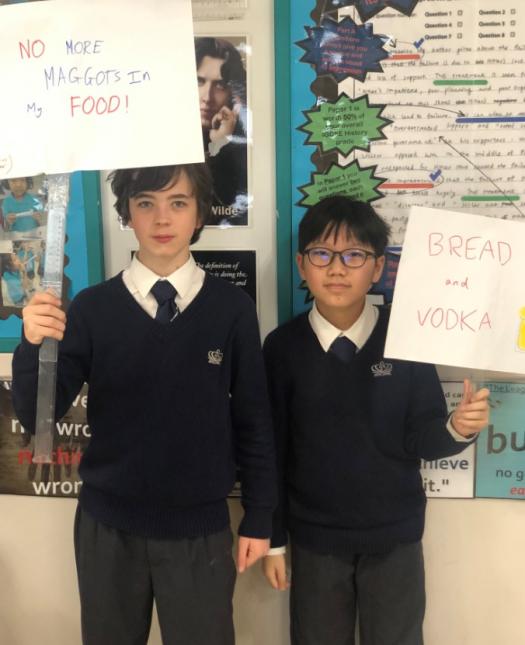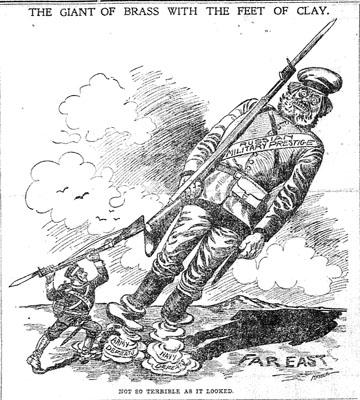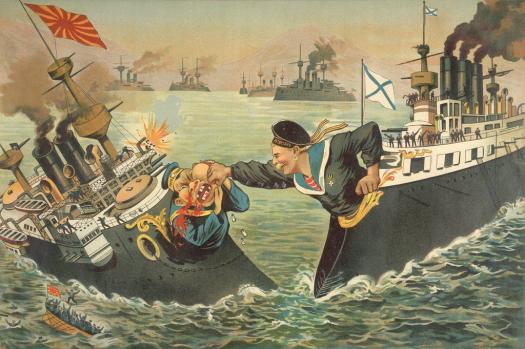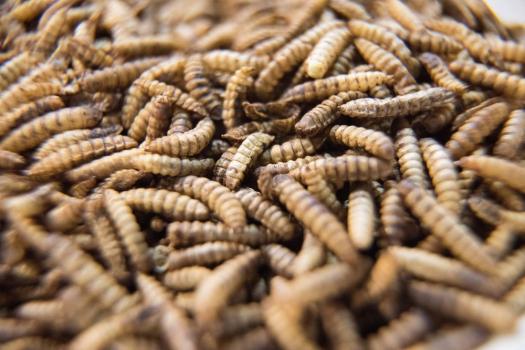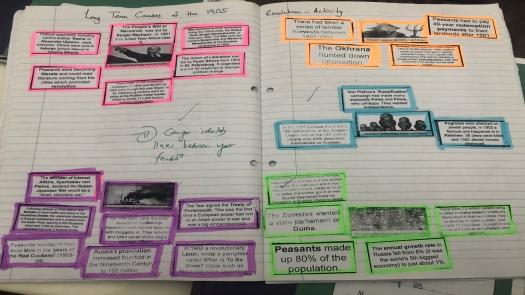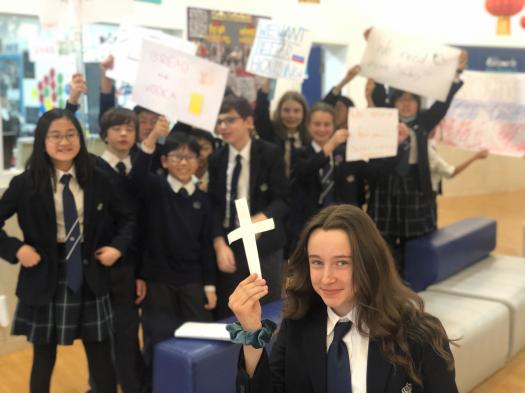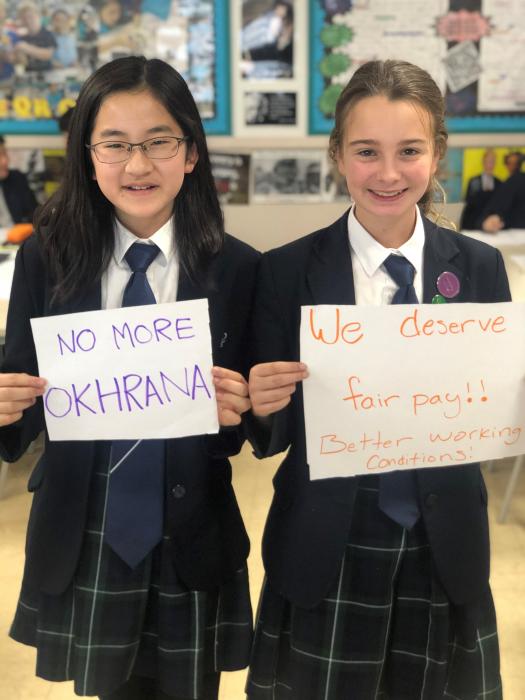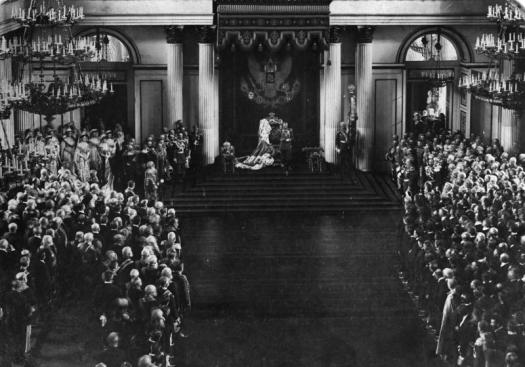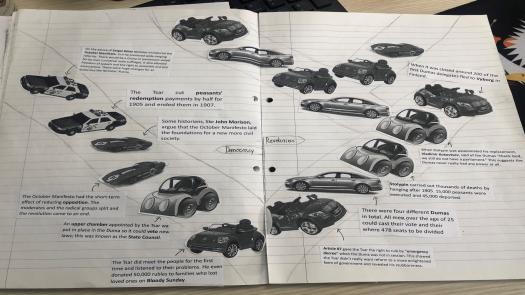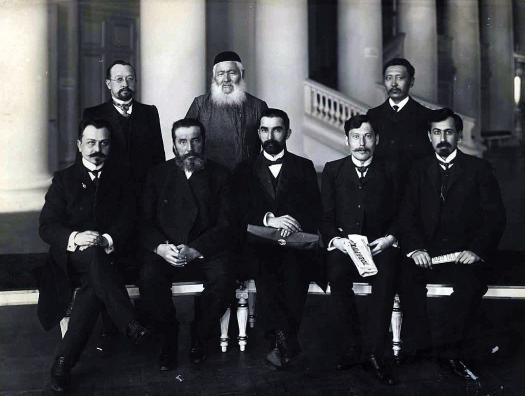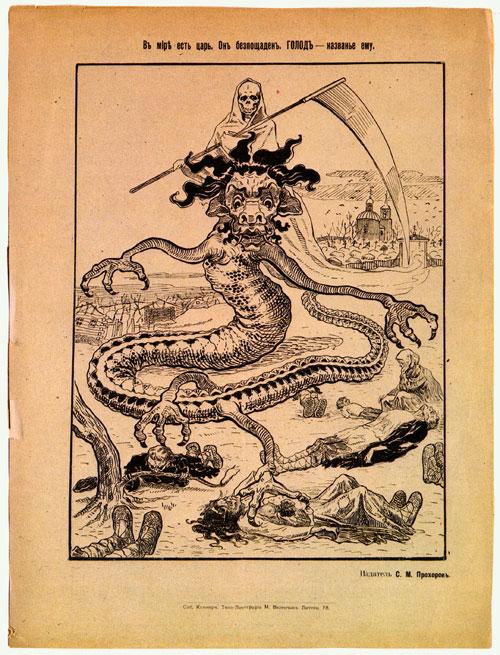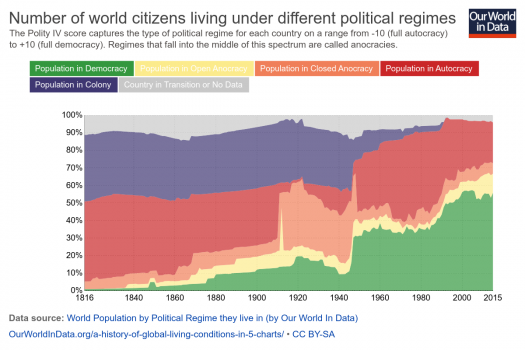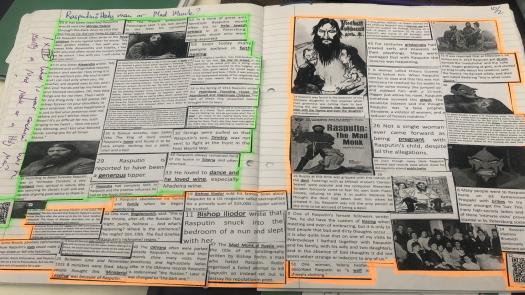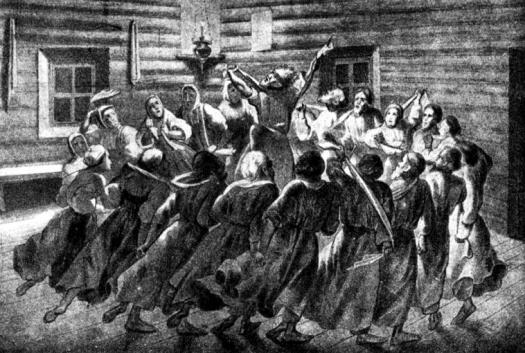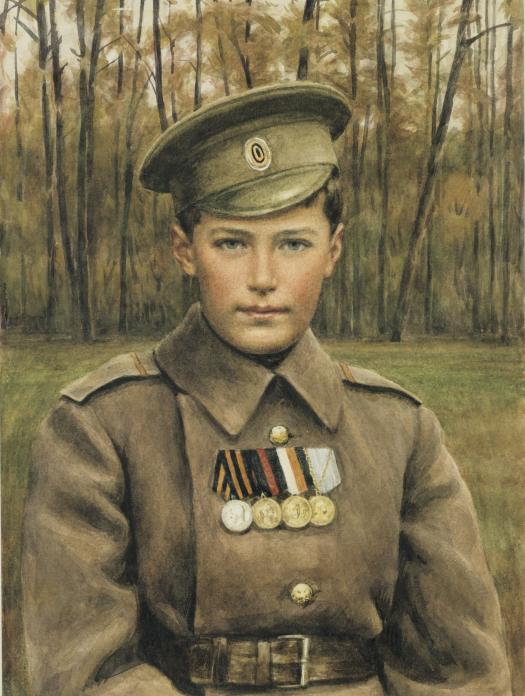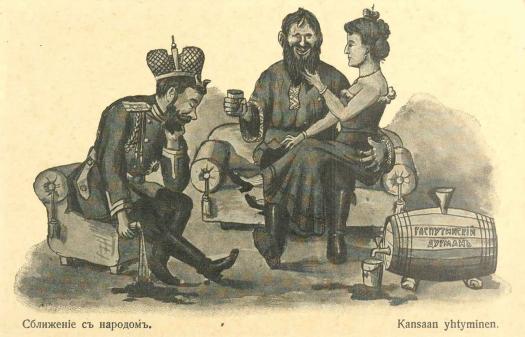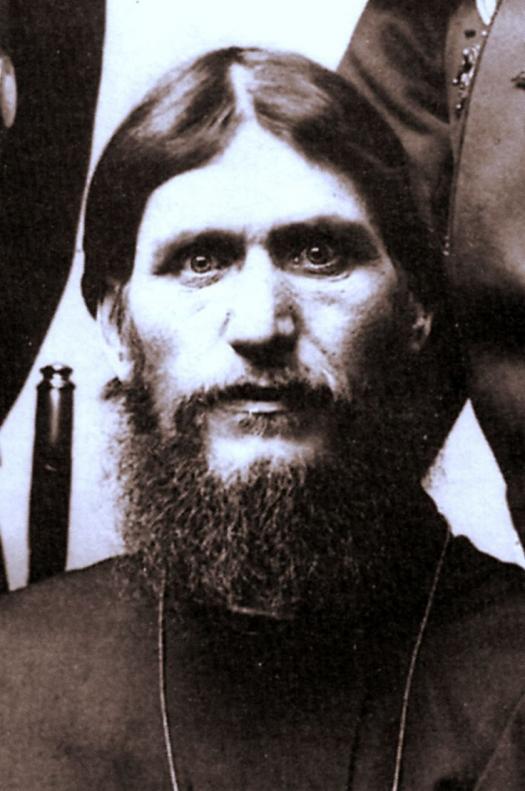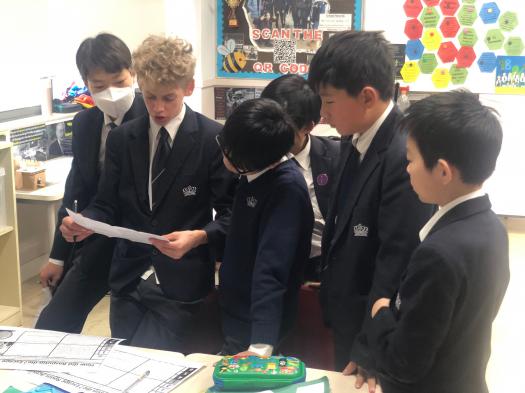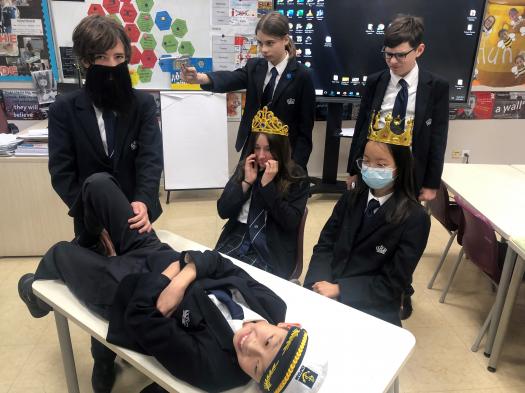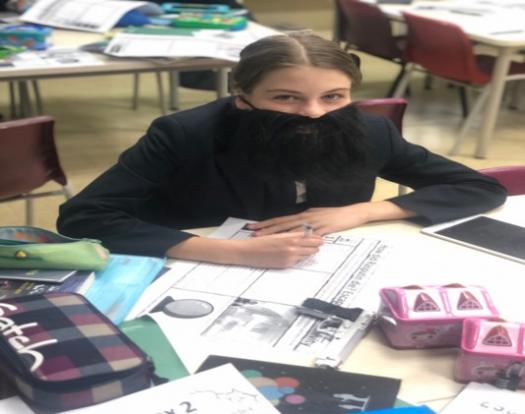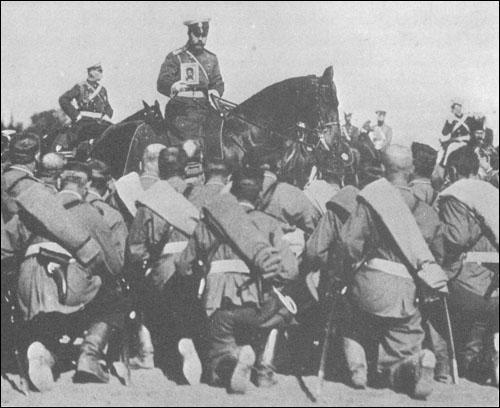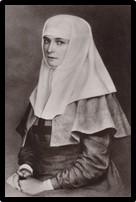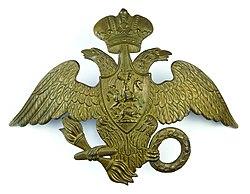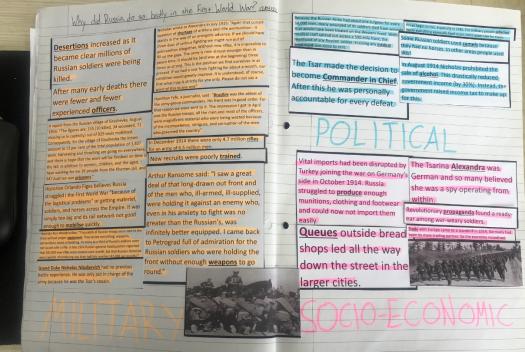How Well Do You Know About Russia Quiz
(233).jpg)
Ever wondered how much do you know about Russia and its history? Check out our online quiz to test yourself, prepare for an upcoming exam, and learn interesting information along the way.
- 1.
How many miles was Russia from east to west at the start of this period?
- A.
2000
- B.
3000
- C.
6000
- D.
10000
Correct Answer
C. 6000Explanation
Russia measured 6,000 miles east to west and 2,000 miles north to south and so covered an absolutely massive area. You could fit China, the USA, AND India into it comfortably. That is how big Russia was in 1894 - a giant! Indeed, it had grown by 20,000 square miles a year since the Seventeenth Century. This meant it was very hard for any enemy to invade Russia. But it also meant it was very hard for a Russian ruler, or Tsar (sometimes spelled Czar or Tzar - the word originates from Caesar), to communicate effectively to all people in the country. It also made it difficult to move troops and to trade.Rate this question:
-
- 2.
Which calendar was Russia using around 1900?
- A.
Julian
- B.
Gregorian
Correct Answer
A. JulianExplanation
The calendar used in 1894 was the Julian calendar, which was 12 (and then 13) days behind the Gregorian calendar used in the West. Russia did change this but not until January 1918. For this reason you sometimes see two different dates given for the same event in History books.Rate this question:
-
- 3.
Russia was ruled by a Tsar (like a King) and had been ruled by one family, the ______________, for 300 years, on the idea of the 'divine right' to rule (the idea that God appointed the Tsar, so to rebel against the Tsar was in effect to rebel against God).
- A.
Windsors
- B.
Habsburgs
- C.
Guineys
- D.
Romanovs
Correct Answer
D. RomanovsExplanation
This meant Russia was an autocracy. Nicholas II was the current Tsar but just before he was crowned in Moscow many people were crushed to death because of rumours the free beer he supplied was running out! Some saw this as an omen of bad things to come in his reign.Rate this question:
-
- 4.
What was the symbol of the Romanov Royal Family?
- A.
A Liverbird
- B.
A rampant lion
- C.
A double-headed eagle
- D.
A pair of crossed swords
Correct Answer
C. A double-headed eagleExplanation
The Romanov's symbol was a doubled-headed eagle which can be seen on the Coat of Arms of Russia and they lived in many beautiful palaces such as The Winter Palace and The Alexander Palace.Rate this question:
-
- 5.
How many children did the Tsar have?
- A.
3
- B.
5
- C.
7
- D.
0
Correct Answer
B. 5Explanation
Nicholas was married to Alexandra, who had been born in Hesse-Darmstadt in Germany. He was reported to be a good family man and their children included Tatiana, Maria, Olga, Anastasia, and the next in line to the throne, a boy, Alexei (who enjoyed sailing and dressing up as a sailor).Rate this question:
-
- 6.
What was the name of the Tsarevich, the son of the Tsar?
- A.
Theo
- B.
Aoshen
- C.
Marco
- D.
Alexei
Correct Answer
D. AlexeiExplanation
Alexei, however, had a disease known as haemophilia, which is when the blood does not clot when one gets bruised. So a simple accident could lead to his death. As such the Tsar and Tsarina were extremely wary of his behaviours and actions for fear he may harm himself. This illness was kept secret from the public, however.Rate this question:
-
- 7.
There were some small assemblies set up by Alexander III which allowed for some tiny amount of political expression. What were they called?
- A.
Zigzags
- B.
Zemstvos
- C.
Zebras
- D.
Zingers
Correct Answer
B. ZemstvosExplanation
Because of the concept of 'divine right' to rule (the idea that God had appointed the Romanovs to rule) the Tsar held near total power. There were small assemblies in the provinces, called zemstvos, which allowed a tiny bit of political expression. These had been set up in 1864 by Tsar Alexander II but they didn't have much real power by the time Nicholas II came to the throne in 1894. Instead, the Tsar appointed all of his own ministers. Absolutely no opposition was allowed.Rate this question:
-
- 8.
Which city was the capital during the reign of Tsar Nicholas II?
- A.
Moscow
- B.
Petrograd
- C.
Simbirsk
- D.
Ekaterinburg
Correct Answer
B. PetrogradExplanation
Russia's capital city was Petrograd, later to be renamed St Petersburg (during the First World War, because it was felt the original name sounded too 'German' and they were fighting Germany). About 1.5% of Russians were aristocrats, the very richest people in Russia. You might be surprised that the official language of these aristocrats was actually French, not Russian. But many of these very rich Russians (also called Bourgoisie) would live comfortable lifestyles. You would also be very amazed at Petrograd's beautiful buildings and architecture such as the incredible Winter Palace, built by Tsar Peter the Great.Rate this question:
-
- 9.
How many diamonds were there in the Imperial Crown of Russia?
- A.
1,000
- B.
2,000
- C.
5,000
- D.
10,000
Correct Answer
C. 5,000Explanation
Bourgois women of Petrograd had a passion for jewels and pearls and the Royal Family had 52 cloisonne eggs made for them by the French jeweller Peter Faberge and the Tsar himself had a special crown known as the Imperial Crown of Russia. It was made from 5,000 diamonds.Rate this question:
-
- 10.
What is the most famous church in Red Square called?
- A.
St Nina's
- B.
St Basil's
- C.
St Claire's
- D.
St. Victoria's
Correct Answer
B. St Basil'sExplanation
If you took a trip to Moscow in 1900 you could see a wonderful number of beautiful Russian Orthodox churches and cathedrals, St Basil's in Red Square perhaps being the most famous of these (it is legend that Ivan the Terrible ordered the designer to be blinded afterwards so he couldn't make anything to rival its beauty). Russia was a very religious country and it was said Moscow had 'forty times forty' churches with their colourful onion domes and minarets. Tsars were crowned in the Uspensky Cathedral inside the red brick walls of the Kremlin.Rate this question:
-
- 11.
Ideas such as Marxism were growing in the ever-increasing industrial cities. What was the name of his most famous work from 1848?
- A.
The Communist Manifesto
- B.
The Communist Leaflet
- C.
The Communist Collection of Ideas and Thoughts
- D.
The Communist Promises to the People of the World
Correct Answer
A. The Communist ManifestoExplanation
There were 2.5 million factory workers in Russia and many were working for extremely low wages. These poor industrial workers are referred to as the Proletariat. Conditions were often rough and workers lived in cramped and crowded accommodation. They ate in shared public soup kitchens and there was no insurance if they got sick or lost their job. Many of the Proletariat would wear cloth caps which are now known as 'Lenin hats.' Labour unions were illegal and so employers could offer very low wages. People lived close together and in these conditions rumours and news spread fast. Amongst the many new ideas in the Nineteenth Century was a concept known as Marxism which was written about in a book titled The Communist Manifesto and which had been written in 1848.Rate this question:
-
- 12.
What percentage of the Russian population were peasants around 1900?
- A.
70%
- B.
80%
- C.
40%
- D.
10%
Correct Answer
B. 80%Explanation
Peasants formed 80% of the population. These peasants had previously been slaves or serfs until they were freed (emancipated) in 1861 by Tsar Alexander II (nicknamed the 'Tsar Liberator') yet they still had a tough life. Many would be out in the fields ploughing or harvesting as they travelled up and down the dusty tracks. Farming machinery was still relatively primitive - it was not uncommon to see men with ploughs fixed to themselves instead of cattle - and Russian farmers yielded only about one seventh of their British equivalents in terms of agricultural produce per acre. Even though they were no longer serfs they were still tied to the commune (Mir) and had to pay redemption payments to their landlords for 49 years which kept them very poor.Rate this question:
-
- 13.
There were many attacks on Jews in late Imperial Russia. What specific word describes these?
- A.
Assaults
- B.
Massacres
- C.
Pogroms
- D.
Attacks
Correct Answer
C. PogromsExplanation
Pogroms is the specific word that describes the attacks on Jews in late Imperial Russia. Pogroms refer to violent, organized attacks against Jewish communities, often involving destruction of property, looting, and physical harm to individuals. This term is commonly used to depict the targeted and systematic nature of these attacks, highlighting the anti-Semitic sentiments prevalent in that era.Rate this question:
-
- 14.
Russia was not a homogenous nation, there were many different nationalities. Which Minister tried to make everyone the same by his hated policy of Russification?
- A.
Witte
- B.
Stolypin
- C.
Von Plehve
- D.
Johnson
Correct Answer
C. Von PlehveExplanation
The Russian population had increased four-fold in the Nineteenth Century to 150 million and it would increase again after 1900, reaching 175 million by 1914. Russia was not a homogenous nation. No, there were many, many different nationalities and ethnic groups living in the Russian Empire; over 100 different languages according to Prof. Peter Waldron. The census of 1897 records 55 million Greater Russians, 22 million Ukranians, 6 million Belorussians, 8 million Catholic Poles, 14 million Muslim Turco-Tartars, and 5.2 million Jews. Armenians, Germans, Georgians, Latvians, Lithuanians, and Romanians numbered less than 2 million but they were grouped close together meaning they had their own loyalties and cultures. One Russian from one part of the empire would have spoken a different language to another Russian from another part of the empire. They would have eaten different food, celebrated different days, and valued different things. Viachelsav von Plehve, Tsar Nicholas II's strong man and Minister of the Interior, put in place a policy called 'Russification'. This was an attempt to make everyone loyal to the Tsar (especially in Poland and Finland) and to speak Russian but it was not wholly successful. People still preferred to speak their own languages and celebrate their own customs, even though many of these groups still had icons and pictures of the Tsar up in their homes.Rate this question:
-
- 15.
What was Sergei Witte's most famous achievement?
- A.
The Great Wall of China
- B.
The Statue of Liberty
- C.
Concorde
- D.
The Trans-Siberian Railway
Correct Answer
D. The Trans-Siberian RailwayExplanation
The Russian economy was the fifth largest in the world (behind Britain, France, Germany, and the USA) but was growing fast at 10% per year. Sergei Witte, the director of railway affairs from 1889 to 1891, had constructed the great Trans-Siberian Railway from Moscow to Vladivostock (about 5,700 miles)Rate this question:
-
- 16.
What name was given to the Tsar's Secret Police?
- A.
OGPU
- B.
NKVD
- C.
Cheka
- D.
Okhrana
Correct Answer
D. OkhranaExplanation
Because the Tsar did not allow any public opposition or parliament there was a growing underground opposition, with groups like Sergei Nechaev's Narodniki (People's Will) which had assassinated Alexander II. Because of this the Tsars had introduced a secret police, known as the Okhrana who would infiltrate political groups and who would torture suspects. Another political group which was growing which opposed Tsardom was called the Socialist Revolutionaries (SRs). They were founded in 1901 and spoke for the peasants. A third major opposition group also existed, the Russian Social Democrat Labour Party (RSDRP) and they believed in the ideas of German philosopher called Karl Marx.Rate this question:
-
- 17.
What was the punishment of 'katorga'?
- A.
Being imprisoned
- B.
Being sent to Siberia to do hard penal labour
- C.
Being sent abroad
- D.
Being hanged
Correct Answer
B. Being sent to Siberia to do hard penal labourExplanation
Okhrana punishments for being in political groups included katorga (hard penal labour) and exile to the freezing climate of Siberia where it was extremely hard just to stay alive.Rate this question:
-
- 18.
In 1903 a split occured in the RSDRP Party in its conference in Brussels. What two factions did this create?
- A.
Tories and Lefties
- B.
Tom and Jerries
- C.
Bolsheviks and Mensheviks
- D.
Republicans and Democrats
Correct Answer
C. Bolsheviks and MensheviksExplanation
In 1903 a split occurred in the RSDRP conference held in Brussels (many opposition leaders were abroad for safety) and two new groups were formed - Martov's Mensheviks and Lenin's Bolsheviks. (Bolshevik meant majority but in actual fact they were, confusingly, the minority).Rate this question:
-
- 19.
With what did Cossack troops often attack people?
- A.
Machine guns
- B.
Knouts (like a whip)
- C.
Tear gas
- D.
Batons
Correct Answer
B. Knouts (like a whip)Explanation
Russia was famous for its army (which was so big it became nicknamed 'the steamroller') and its best troops were the Cossacks, known for their crowd control through the use of their knouts (whip). They wore elegant uniforms and fought bravely but were a minority of the army, which even in peacetime stood at 1 million. 30% to 40% of soldiers could read and write, compared to 90% in the German army because most of the Russian army were peasants.Rate this question:
-
- 20.
Industrialisation had been taking place in Russia at great speed under the guidance of a Minister called _______________ who came from a non-noble background.
- A.
Pobodonostev
- B.
Stolypin
- C.
Witte
- D.
Putin
Correct Answer
C. WitteExplanation
This led to growing cities full of urban workers. Moscow became famous for textiles and St. Petersburg for metal processing. Coal and chemicals grew as industries in Poland and iron ore became big business in Donetz. Mining took place in the Urals and oil was found in Baku. Sugar beet was processed in the south west and manganese production took place on a large scale in Transcaucasia. One Welshman, John Hughes, built his own factory town which became Donetz. It doubled from 7.3 to 14.6 million in the years 1867-97.Rate this question:
-
- 21.
What was the name for the Commune to which Russian peasants were tied?
- A.
Mir
- B.
Marr
- C.
More
- D.
Mryhrr
Correct Answer
A. MirExplanation
Finally, we must remember the conditions of the peasantry (which made up 80% of the Russian population). They were still tied to their Mirs on their often tiny plots of land and faced 49-year redemption payments to their landlords. In other words, they had to pay for what they felt was rightfully theirs. They had been promised ‘land and liberty’ when they were freed from serfdom in 1861 and that had still not been realized. Life was tough and there had been a series of terrible harvests between 1897-1901. New technology, such as the railways (which had grown from 9000 miles in 1860 to 19000 miles by 1899), meant it was easier for the government to export even more grain, leaving peasants in the countryside hungry. Grain exports had increased by 18% in the late Nineteenth Century and the motto of the Minister in charge of this, Vyshnegradsky, was "We ourselves shall not eat, but we shall export."Rate this question:
-
- 22.
Tsar Nicholas had been attacked in a far east country which made him very racist towards it. What country?
- A.
Korea
- B.
Japan
- C.
China
- D.
The Philippines
Correct Answer
B. JapanExplanation
The correct answer is Japan because the question states that Tsar Nicholas had been attacked in a far east country, which implies that the country in question is located in the far east. Additionally, it is mentioned that this attack made him racist towards this country, indicating that the attack had negative consequences on his perception of that particular country. Therefore, Japan is the most suitable answer as it is a far east country and has a historical context of conflicts with Russia, which could have influenced Tsar Nicholas' racist attitude towards Japan.Rate this question:
-
- 23.
On which date did the Russo-Japanese War begin?
- A.
18th January 1904
- B.
25th January 1904
- C.
31st January 1904
- D.
25th December 1904
Correct Answer
B. 25th January 1904Explanation
Russia had been building up a strong force in Asia through China which annoyed Japan who saw this as their sphere of influence. As such, on the night of 25th January 1904 Japanese torpedo boats slipped into the Russian port of Port Arthur and launched a surprise attack on Russia. The Russo-Japanese War had begun.Rate this question:
-
- 24.
Which Treaty marked the end of the Russo-Japanese War?
- A.
Treaty of Shanghai
- B.
Treaty of Cairo
- C.
Treaty of Singapore
- D.
Treaty of Portsmouth
Correct Answer
D. Treaty of PortsmouthExplanation
It was never going to be easy transporting troops 6,000 miles from the Russian capital to the East yet the Minister of Internal Affairs, Vyacheslav von Plehve, famously declared it would be a "short, victorious war." Following heavy defeats at Port Arthur and Mukden a notable naval battle took place in the Tsushima Straits; the Japanese destroyed 8 Russian battleships and 4
cruisers from the Baltic Fleet, leaving 4,000 Russians dead and a further 7,000 as prisoners. In this encounter the Japanese lost only 3 torpedo boats. It was the worst naval defeat in Russian history. Historian Sally Waller refers to it as "gross national humiliation." The Tsar had to sign a peace treaty called the Treaty of Portsmouth. This marked the first time a European power had lost to an Asian power in war and was a big embarrassment for Russia.Rate this question:
-
- 25.
On which battleship were sailors served maggots in their meat?
- A.
Deutschland
- B.
Victory
- C.
Potemkin
- D.
Popeye
Correct Answer
C. PotemkinExplanation
On 14th June 1905 the crew aboard the Battleship Potemkin were served soup but with maggots in. They rebelled and killed seven of the ship's eighteen officers.Rate this question:
-
- 26.
On which day in 1905 were hundreds of peaceful protestors gunned down by the Tsar's army? Bloody ______________
- A.
Saturday
- B.
Sunday
- C.
Monday
- D.
Tuesday
Correct Answer
B. SundayExplanation
‘Bloody Sunday’ is the name given to the events of Sunday 22nd January 1905 in St. Petersburg when unarmed demonstrators, led by an Orthodox Priest called Father Georgi Gapon, marched towards the Tsar’s Winter Palace in the hope of giving him a petition which included a list of changes they felt would improve their lives. These included improved working conditions, fairer wages, a reduction in the working day to just 8 hours, and the introduction of universal suffrage (so everybody could vote). 135,000 workers had signed the petition, which was polite and respectful in tone.Rate this question:
-
- 27.
Who led the peaceful protests which took place on Bloody Sunday?
- A.
Father Gapon
- B.
Rasputin
- C.
Lenin
- D.
Kerensky
Correct Answer
A. Father GaponExplanation
Gapon himself described what happened in his book ‘The Story of My Life’: “Suddenly the company of Cossacks galloped rapidly towards us with drawn swords. So, then, it was to be a massacre after all! There was no time for consideration, for making plans, or giving orders. A cry of alarm arose as the Cossacks came down upon us. Our front ranks broke before them, opening to right and left, and down the land the soldiers drove their horses, striking on both sides. I saw the swords lifted and falling, the men, women, and children dropping to the earth like logs of wood, while moans, curses and shouts filled the air.”Rate this question:
-
- 28.
Which composer wrote a powerful piece of music about Bloody Sunday?
- A.
Mozart
- B.
Verdi
- C.
Beethoven
- D.
Shostakovitch
Correct Answer
D. ShostakovitchExplanation
He was a pianist and leading composer in the USSR in the Twentieth Century (even though he had an on-off relationship with the government). After a rare visit to the opera in 1936 Stalin said his work has “considerable ideological-political value.”Rate this question:
-
- 29.
The 1905 revolution led to the Tsar issuing which document? The ________________ Manifesto
- A.
August
- B.
September
- C.
October
- D.
November
Correct Answer
C. OctoberExplanation
Nicholas wrote in his diary of how he felt his ministers were like “headless chickens.” He had two options: either a full scale military crackdown or to give in to the protestors. And so, on 17th October, on the advice of Sergei Witte the Tsar announced his October Manifesto which was a broad range of civil rights which would be introduced. Prof. Peter Waldron of the University of East Anglia calls it “the defining document of Tsarism.”Rate this question:
-
- 30.
Which of the following did the October Manifesto NOT promise?
- A.
A freely elected Duma, or Parliament
- B.
Freedom of speech
- C.
Freedom of expression
- D.
Free hugs
Correct Answer
D. Free hugsExplanation
In the manifesto the Tsar declared he would create a state Duma or parliament which could create laws, control finances, and which would be elected by universal male suffrage (one man = one vote). The manifesto also offered freedom of speech and the right to peacefully assemble as well as freedom of association. It would have control over national finances and no law code could be issued without the Duma’s approval.Rate this question:
-
- 31.
Soon after the October Manifesto the Tsar rewrote his ______________ Laws which reminded the people of the "supreme power" of the Tsar. What were these laws?
- A.
Important Laws
- B.
Scientific Laws
- C.
Fundamental Laws
- D.
Silly Laws
Correct Answer
C. Fundamental LawsExplanation
However, soon after (April 1906) the ‘Fundamental Laws’ were re-written and they stated that “supreme autocratic power belongs to the Emperor of all Russia” in Article 1. An upper chamber appointed by the Tsar was put in place in the Duma so it could veto new laws; this was known as the State Council. Moreover, Article 87 gave the Tsar the right to rule by “emergency decree” when the Duma was not in session. This showed the Tsar didn’t really want reform to a more enlightened form of government and revealed his stubbornness. He was reported to have said “I have a constitution in my hand but in my heart I spit on it.” The opportunity for the Tsar to work with his educated elites to follow a path through a constitutional monarchy was gone. Only a ‘revolution from below’ would change the government from this point on.Rate this question:
-
- 32.
How many Dumas were there in total?
- A.
1
- B.
2
- C.
3
- D.
4
Correct Answer
D. 4Explanation
There were four different Dumas in total. All men over the age of 25 could cast their vote and their where 478 seats to be divided but only a small group of rich landlords (those who owned over 160 hectares) could vote directly. Everyone else voted for members of the electoral college.Rate this question:
-
- 33.
How many days did the first Duma last until the Tsar dissolved it?
- A.
33
- B.
53
- C.
73
- D.
93
Correct Answer
C. 73Explanation
The first Duma ran from April-July 1906 and met in the Tauride Palace. It was quickly dissolved on 9th July 1905, however. It had existed for only 73 days. It had been filled mostly with moderates. The Kadets, who wanted more reform, had 179 seats. The Octobrists (who liked the October Manifesto) had 17 seats. More extreme parties, like the Bolsheviks, had boycotted it and refused to take part. The Prime Minister Goremykin wrote to it to shut down a number of its proposals on education, taxation, and peasant problems. When it was closed around 200 of its delegates fled to Vyborg in Finland. Their response to the Prime Minister was this: “by its refusal to fulfil the people’s demands, the government is displaying obvious contempt for the true interests of the people and is clearly willing to countenance new upheavals in the country.” The Tsar had no interest in real democracy.Rate this question:
-
- 34.
What was Stolypin's necktie?
- A.
A close game
- B.
The gallows
- C.
A dickie bow
- D.
A cravate
Correct Answer
B. The gallowsExplanation
Pyotr Stolypin was introduced as chairman of the Council of Ministers in July 1906. He was an especially tough politician who hanged so many opponents that the gallows became known as ‘Stolypin’s necktie.’ His field courts carried out thousands of deaths by hanging. 15,000 peasants were executed and 45,000 deported.Rate this question:
-
- 35.
The third Duma was known as the Duma of the _____________________________________
- A.
Ben and Jerries
- B.
Knives and forks
- C.
Peanut butters and jellies
- D.
Lords and lackeys
Correct Answer
D. Lords and lackeysExplanation
The third Duma ran from November 1907-June 1912. Because of changes made by Stolypin this Duma was dominated by moderates who supported the Tsar and there were much fewer socialists. Political violence continued to grow and by 1907 a total of 4,500 Tsarist officials had lost their lives since the beginning of the Russo-Japanese War in 1904. Stolypin himself was assassinated in September 1911 when he was shot twice on a trip to the opera. His successor, Vladimir Kokovstov, simply tried to ignore the Duma. It was known as the ‘Duma of the Lords and Lackeys.’Rate this question:
-
- 36.
Nicholas was reported to have said “I have a constitution in my hand but in my __________ I ________ on it.”
- A.
Brain / Think
- B.
Fingers / Crumple
- C.
Boots / Stand
- D.
Heart / Spit
Correct Answer
D. Heart / SpitExplanation
Nicholas was reported to have said “I have a constitution in my hand but in my heart I spit on it.” By not allowing freedom and democracy he was creating a road to revolution.Rate this question:
-
- 37.
Which part of Russia did Rasputin come from?
- A.
Moscow
- B.
Simbirsk
- C.
St Petersburg
- D.
Siberia
Correct Answer
D. SiberiaExplanation
Rasputin came from Pokrovskoye in Siberia where temperatures could reach as low of -71 degrees celsius. He was an uneducated peasant (not surprising because literacy rates in Siberia at this time were only 4%) and is reported to have been born to Yefim and Anna Parshukova on 9th or 10th January 1869, their first child to survive (after four previous child deaths).Rate this question:
-
- 38.
What was Rasputin accused of being a member of?
- A.
Liverpool FC Supporters' Club
- B.
The National Trust
- C.
Khlyst
- D.
The Ministry of Silly Walks
Correct Answer
C. KhlystExplanation
The area he came from was home to a bizarre religious sect called the Khlysty. They liked to make themselves dizzy by dancing in a whirling motion (they called this ‘spiritual beer’) and believed that people could only be cleansed of their sins if they had indeed first sinned. This led to many of them having very lurid relations with one another. Many people believed that Rasputin had been a member of this sect and that it explained his sexual appetite.Rate this question:
-
- 39.
Which word means a wandering Holy Man?
- A.
Itinerant
- B.
Stranniki
- C.
Free spirit
- D.
Wolverhampton Wanderer
Correct Answer
B. StrannikiExplanation
Eventually Rasputin claimed he had a calling from God and set out to cross Russia as a pilgrim. He claimed he had a vision of Mother Mary saying "Give all that up and become a new man and I will exhalt you." Such people were known as stranniki or holy wanderers and were a common enough sight in old Russia (in 1900 there were about 1 million such people). Others say he was fleeing to escape charges of horse stealing. Nevertheless, he would sometimes walk 30 miles per day and begged or did odd jobs to earn a few kopecks. It is possible he travelled as far afield as Mount Athos in Greece, the main centre of Orthodox Christianity. Through his travels he developed a terrific talent for preaching as well as for reading people. Douglas Smith reports "he could meet someone for the first time and strangely see inside them." Word began to spread about this remarkable Holy Man who, even when set upon by thugs and muggers, would freely share what little he had saying "It is God's, not mine."Rate this question:
-
- 40.
Which of these people suffered from haemophilia?
- A.
Tsar
- B.
Tsarina
- C.
Tsarevich
- D.
Zsa Zsa Gabor
Correct Answer
C. TsarevichExplanation
The Tsar and Tsarina had four daughters; Olga, Tatiana, Maria, and Anastasia. But only a son could inherit the throne, and so Nicholas and Alexandra were overjoyed when on 30th July 1904 at 1.15pm they finally had a baby boy, Alexei. However, this future leader of Russia (Tsarevich), had a serious illness called haemophilia. The disease had been passed on by his mother's grandmother Queen Victoria who had been a carrier and it is often called ‘the Royal disease’. This meant Alexei's blood did not clot properly and if he bruised himself the bleeding would go on for a long period, perhaps days, and could kill him. As the English Historian Sir Bernard Pares wrote: "the nursery was the centre of all Russia's troubles."Rate this question:
-
- 41.
Is there definite proof Rasputin and the Tsarina had an affair?
- A.
Yes
- B.
No
Correct Answer
B. NoExplanation
In one letter Alexandra (who let us remember was from from Hesse-Darmstadt in Germany) incredibly wrote: "My beloved and unforgettable teacher, saviour and mentor. How tiring it is for me without you. My soul is calm and I can rest only when you, my teacher, are seated next to me, and I kiss your hands and lay my head on your blessed shoulders. Oh, how easy things are for me then. Then I wish for one thing only - to fall asleep, fall asleep forever on your shoulders, in your embrace. Oh, what happiness it is just to feel your presence near me. Where are you? Wither have you flown? It's so difficult for me, such longing in my heart ... Give me your Holy Blessing, and I kiss your blessed hands. Loving you for all times. Mama."Rate this question:
-
- 42.
Finish this famous Boney M line from a pop song. "Ra Ra Rasputin Russia's greatest ________________"
- A.
Peasant
- B.
Tyrant
- C.
Love machine
- D.
Starets
Correct Answer
C. Love machineExplanation
Rasputin was seen as uncouth and vulgar by man. He would eat with his hands, was rough-looking, and smelt like a peasant. To many high-society ladies this was quite appealing! They had never met anyone quite like Rasputin. Some even cut his fingernails and sewed them into their clothing as if they were holy relics. One thing most people agreed on is that Rasputin had piercing and mesmerising eyes (which were greenish-grey) and he had huge sex appeal. Rasputin was a womaniser and a drinker who would visit bars and get outrageously drunk. The Okhrana regularly spied on his apartment and their records reveal hundreds of female visitors. Because people knew he had the ear of the Tsarina people would often come to visit him to ask for favours. He has been described as a ‘King Rat’ that would turn women to jelly with a single look!Rate this question:
-
- 43.
Which of the following was Rasputin NOT accused of?
- A.
Ministerial Leapfrog
- B.
Sleeping with the Tsarina
- C.
Hypnotism
- D.
Having a sweet tooth
Correct Answer
D. Having a sweet toothExplanation
Between June and November 1915 8 ministers were fired. Many people thought this ‘Ministerial Leapfrog’ was because of Rasputin.Rate this question:
-
- 44.
Who was NOT involved in the plot to kill Rasputin?
- A.
Tsar Nicholas II
- B.
Dmitri Purishkevich
- C.
Prince Yusupov
- D.
Dr Lazovert
Correct Answer
A. Tsar Nicholas IIExplanation
With the Tsar away at the front leading the army and the German-born Tsarina in St. Petersburg rumours were widespread. Many Russians believed Rasputin was damaging the monarchy; some thought he was responsible for ministerial appointments and others even thought he was having an affair with the Tsarina. There were many people who thought Russia would be better off without him. On 6th November 1916 a politician in the Duma, a right-wing politician called Purishkevich stood up and made a speech in which he asked if the Royal Family was guilty of "stupidity or treason." He went further by saying "while Rasputin is alive ... we cannot win the war."Rate this question:
-
- 45.
Which of the following is NOT a reason to not trust Yusupov's account of Rasputin's death?
- A.
He needed money (having been forced to flee Communist Russia)
- B.
Rasputin did not like sweet things like cakes - why would he eat them?
- C.
Because Rasputin could have killed the assassins with his devilish laser eyes!
- D.
He may have had an affair with Rasputin himself and killed him out of revenge
Correct Answer
C. Because Rasputin could have killed the assassins with his devilish laser eyes!Explanation
A group of wealthy Russians, including Purishkevich, got together and decided once and for all to do away with the 'Mad Monk.' One of the conspirators who joined with Purishkevich was a rich Oxford-educated man called Prince Felix Youssoupov. Youssopov was actually richer than Nicholas II and owned a glittering palace on the Moika Canal. Knowing Rasputin's weakness for beautiful women it was decided to lure Rasputin to the palace on the promise of 'meeting' Youssopov's wife, Irina. As Historian Sean McMeekin says "Rasputin had never before declined an invitation to meet a Princess." Rasputin would be offered cakes and wine, laced with potassium cyanide at the very last minute, and so he would be poisoned to death. In the event this failed the murderers would be armed with pistols so they could shoot Rasputin. They also had bought some heavy chains to weigh the body down so it would sink in case they needed to dispose of it in the nearby Neva River. The river was a little way away from the palace so it would stop them looking like obvious suspects if they dumped the body there. Youssopov also dismissed his servants for the night so there would be no witnesses around.Rate this question:
-
- 46.
Pre WWI what was the nickname of the Russian army?
- A.
The pneumatic drill
- B.
The brush
- C.
The steamroller
- D.
The hammer
Correct Answer
C. The steamrollerExplanation
In 1914 the Russian Army totalled 115 infantry and 38 cavalry divisions with nearly 7,900 guns (7,100 field guns, 540 field howitzers and 257 heavy guns). There were only 2 army ambulances and 679 cars. Divisions were allocated as follows: 32 infantry and 10.5 cavalry divisions to operate against Germany, 46 infantry and 18.5 cavalry divisions to operate against Austria-Hungary, 19.5 infantry and 5.5 cavalry divisions for the defence of the Baltic Sea and the Black Sea, and 17 infantry and 3.5 cavalry divisions were to be transported in from Siberia and Turkestan. The Russian army was nicknamed the ‘steamroller’ because of the sheer number of men who could be called up to fight.Rate this question:
-
- 47.
In 1915 which fateful decision did the Tsar make?
- A.
Exiled Rasputin
- B.
Divorced his wife Alexandra
- C.
Dissolved the Duma
- D.
Made himself Commander in Chief of the Army
Correct Answer
D. Made himself Commander in Chief of the ArmyExplanation
In response to the defeat at Warsaw Tsar Nicholas II declared himself Supreme Commander of the Armed Forces in the late summer of 1915. Considering how badly it was going and that the peasants would actually fight for their Tsar there was some sense to this decision. However, it left the (German-born) Tsarina Alexandra at home with Rasputin and this led to tremendous gossip in St. Petersburg. Some argued she was a German spy and others claimed they were having an affair. It also meant the Tsar was now directly accountable for any military defeat that happened. It was a crucial decision.Rate this question:
-
- 48.
The Tsarina dressed up as a nurse to help wounded soldiers. Why was this particularly badly timed?
- A.
She accidentally wore a German nurses uniform
- B.
Nurses outfits were being used for Halloween at that time
- C.
Lots of prostitutes in St Petersburg were using nurses outfits
- D.
Nurses were killing soldiers in secret
Correct Answer
C. Lots of prostitutes in St Petersburg were using nurses outfitsExplanation
Prof Orlando Figes tells us that Alexandra dressed up as a nurse to help the soldiers. This seems like a great idea until we realise that thousands of nurses uniforms had been stolen and ended up with prostitutes in St. Petersburg. The production of these photographs therefore only confirmed to many Russians what they already believed about the rumours about the Tsarina.Rate this question:
-
- 49.
Where was the peace treaty which saw Russia leave the First World War signed?
- A.
Versailles
- B.
Neuilly
- C.
Trianon
- D.
Brest-Litovsk
Correct Answer
D. Brest-LitovskExplanation
The war continued to go extremely badly for Russia up until it was forced to sign an incredibly harsh peace treaty with Germany at Brest-Litovsk in 1917. By this time a total of 1.7 million Russian soldiers had died, 8 million were wounded, and 2.5 million were taken prisoners of war. This figure was greater than any other nation involved in the war.Rate this question:
-
- 50.
What did Russian soldiers have a special shortage of?
- A.
Bravery
- B.
Rifles
- C.
Food
- D.
Medals
Correct Answer
B. RiflesExplanation
In December 1914 there were only 4.7 million rifles for an army of 6.5 million men.Rate this question:
-
Quiz Review Timeline +
Our quizzes are rigorously reviewed, monitored and continuously updated by our expert board to maintain accuracy, relevance, and timeliness.
-
Current Version
-
Mar 22, 2023Quiz Edited by
ProProfs Editorial Team -
Mar 22, 2021Quiz Created by
Catherine Halcomb
 Back to top
Back to top



